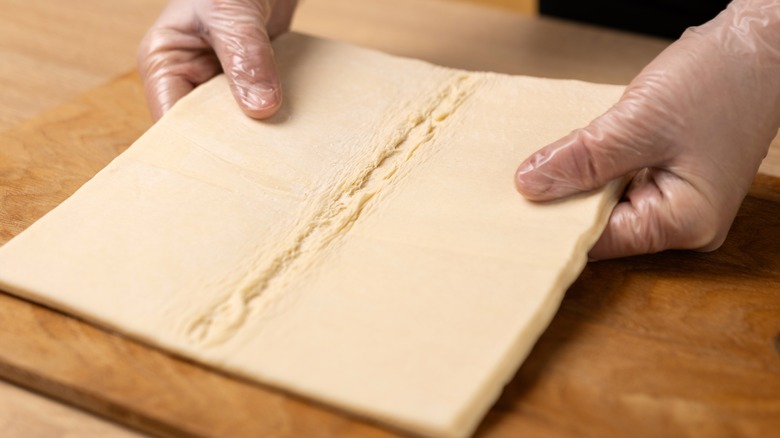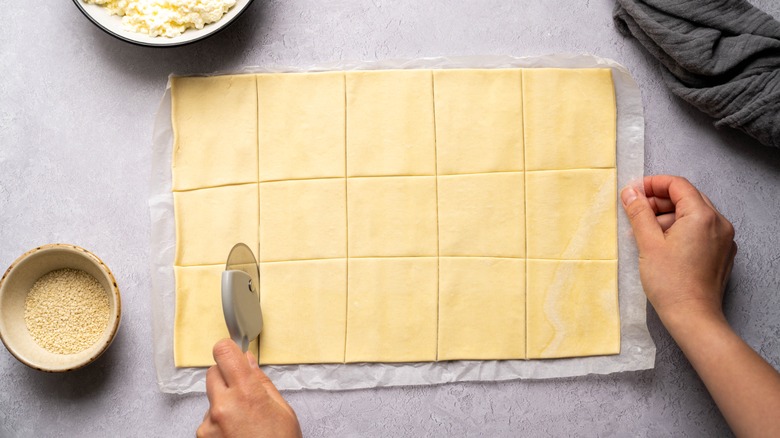The Easiest Way To Avoid Cracking Frozen Puff Pastry Is Also The Most Obvious
We may receive a commission on purchases made from links.
Puff pastries are the ticket to easy, beautiful dishes, but the fragile sheets of dough can be finicky to handle. With the countless ways to use puff pastry, it can pay off to learn how to master the art of manipulating these delicate sheets into flaky tarts, crispy cream cheese and prosciutto pinwheels, and mouth-watering puffs. While opting to work with an all-butter puff pastry can yield a dough that is easier to form, roll, and cut, you'll also want to make sure that the temperature of your store-bought dough is optimal. If it's too warm, and you're at the risk of a tacky dough sticking to surfaces and losing shape. If it's too cold, and the sheets of dough can crumble and break.
To achieve the Goldilocks-approved perfect temperature, you'll want to thaw the dough before you set out to make spinach and sun-dried tomato puffs. You can thaw the pastry in the fridge before you begin your culinary project or leave the frozen sheets of dough out on the countertop before you start your work.
Setting yourself up for culinary success
Once the store-bought puff pastry is thawed, you'll be less likely to tear the sheets as you go about forming simple apple strudel or savory mushroom and lentil hand pies. Your patience and planning will make a difference as you get to rolling out sheets of dough and cutting pieces to make tarts to fill. Though a torn sheet of puff pastry isn't the end-all for your culinary projects — you can use a pastry brush and a little water to glue any torn pieces back together — setting yourself up for success can help you put recipes together with little fuss so that you can present your dishes to dinner guests with pride.
While your recipes come together quickly in the kitchen and your puff pastries bake, you can direct your attention to other kitchen projects as you wait for the oven timer to sound.

